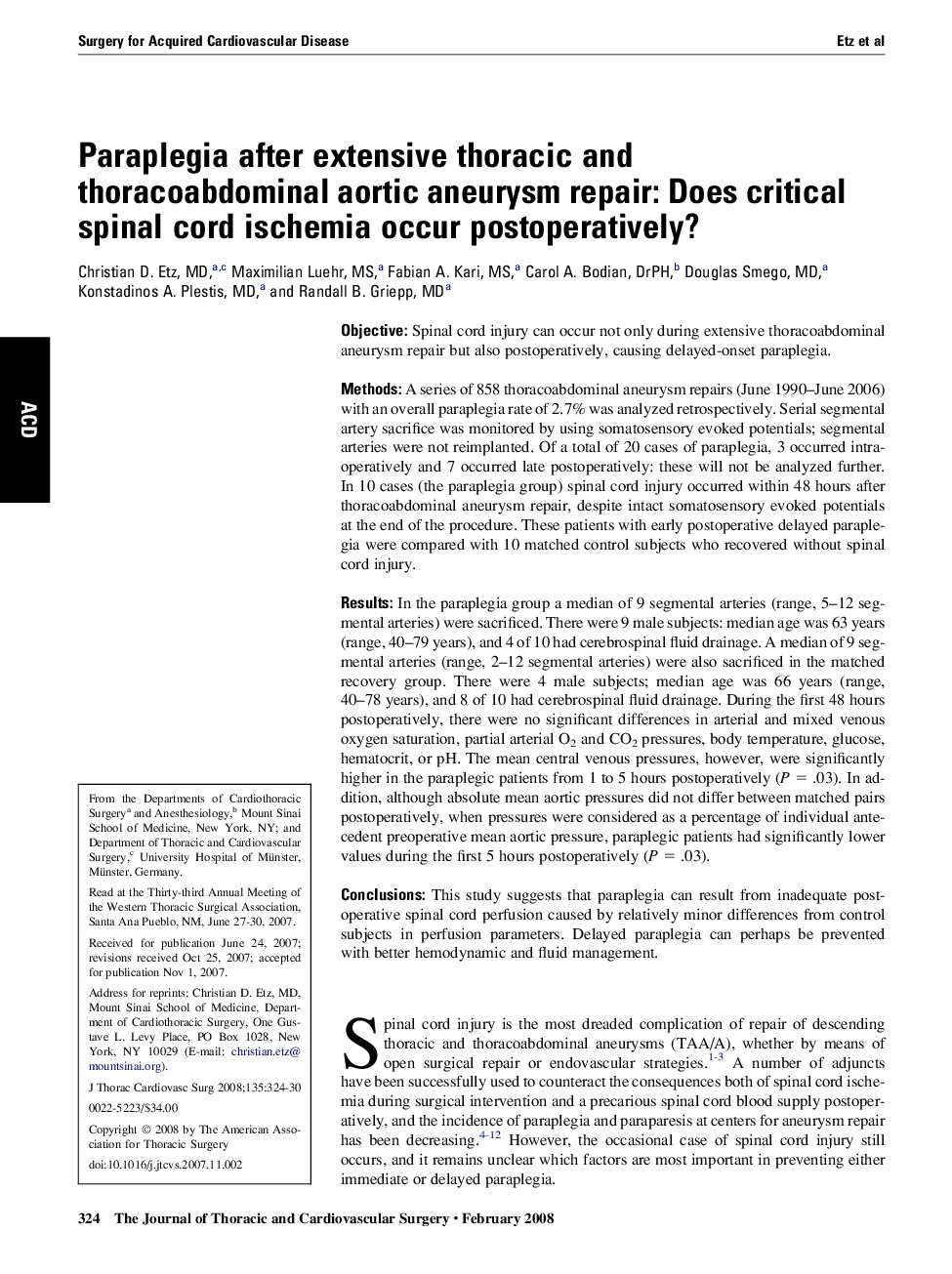| کد مقاله | کد نشریه | سال انتشار | مقاله انگلیسی | نسخه تمام متن |
|---|---|---|---|---|
| 2986355 | 1578689 | 2008 | 7 صفحه PDF | دانلود رایگان |

ObjectiveSpinal cord injury can occur not only during extensive thoracoabdominal aneurysm repair but also postoperatively, causing delayed-onset paraplegia.MethodsA series of 858 thoracoabdominal aneurysm repairs (June 1990–June 2006) with an overall paraplegia rate of 2.7% was analyzed retrospectively. Serial segmental artery sacrifice was monitored by using somatosensory evoked potentials; segmental arteries were not reimplanted. Of a total of 20 cases of paraplegia, 3 occurred intraoperatively and 7 occurred late postoperatively: these will not be analyzed further. In 10 cases (the paraplegia group) spinal cord injury occurred within 48 hours after thoracoabdominal aneurysm repair, despite intact somatosensory evoked potentials at the end of the procedure. These patients with early postoperative delayed paraplegia were compared with 10 matched control subjects who recovered without spinal cord injury.ResultsIn the paraplegia group a median of 9 segmental arteries (range, 5–12 segmental arteries) were sacrificed. There were 9 male subjects: median age was 63 years (range, 40–79 years), and 4 of 10 had cerebrospinal fluid drainage. A median of 9 segmental arteries (range, 2–12 segmental arteries) were also sacrificed in the matched recovery group. There were 4 male subjects; median age was 66 years (range, 40–78 years), and 8 of 10 had cerebrospinal fluid drainage. During the first 48 hours postoperatively, there were no significant differences in arterial and mixed venous oxygen saturation, partial arterial O2 and CO2 pressures, body temperature, glucose, hematocrit, or pH. The mean central venous pressures, however, were significantly higher in the paraplegic patients from 1 to 5 hours postoperatively (P = .03). In addition, although absolute mean aortic pressures did not differ between matched pairs postoperatively, when pressures were considered as a percentage of individual antecedent preoperative mean aortic pressure, paraplegic patients had significantly lower values during the first 5 hours postoperatively (P = .03).ConclusionsThis study suggests that paraplegia can result from inadequate postoperative spinal cord perfusion caused by relatively minor differences from control subjects in perfusion parameters. Delayed paraplegia can perhaps be prevented with better hemodynamic and fluid management.
Journal: The Journal of Thoracic and Cardiovascular Surgery - Volume 135, Issue 2, February 2008, Pages 324–330